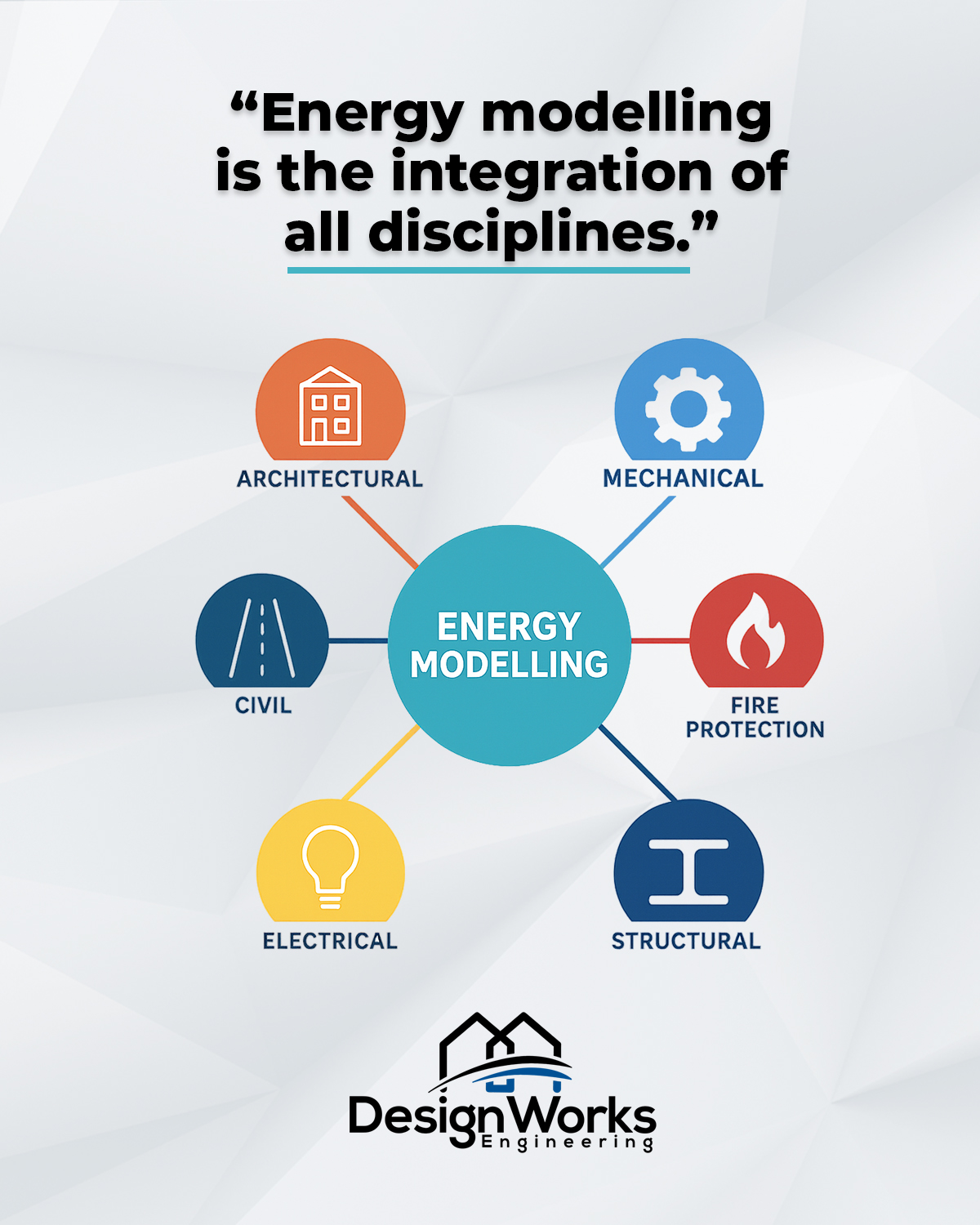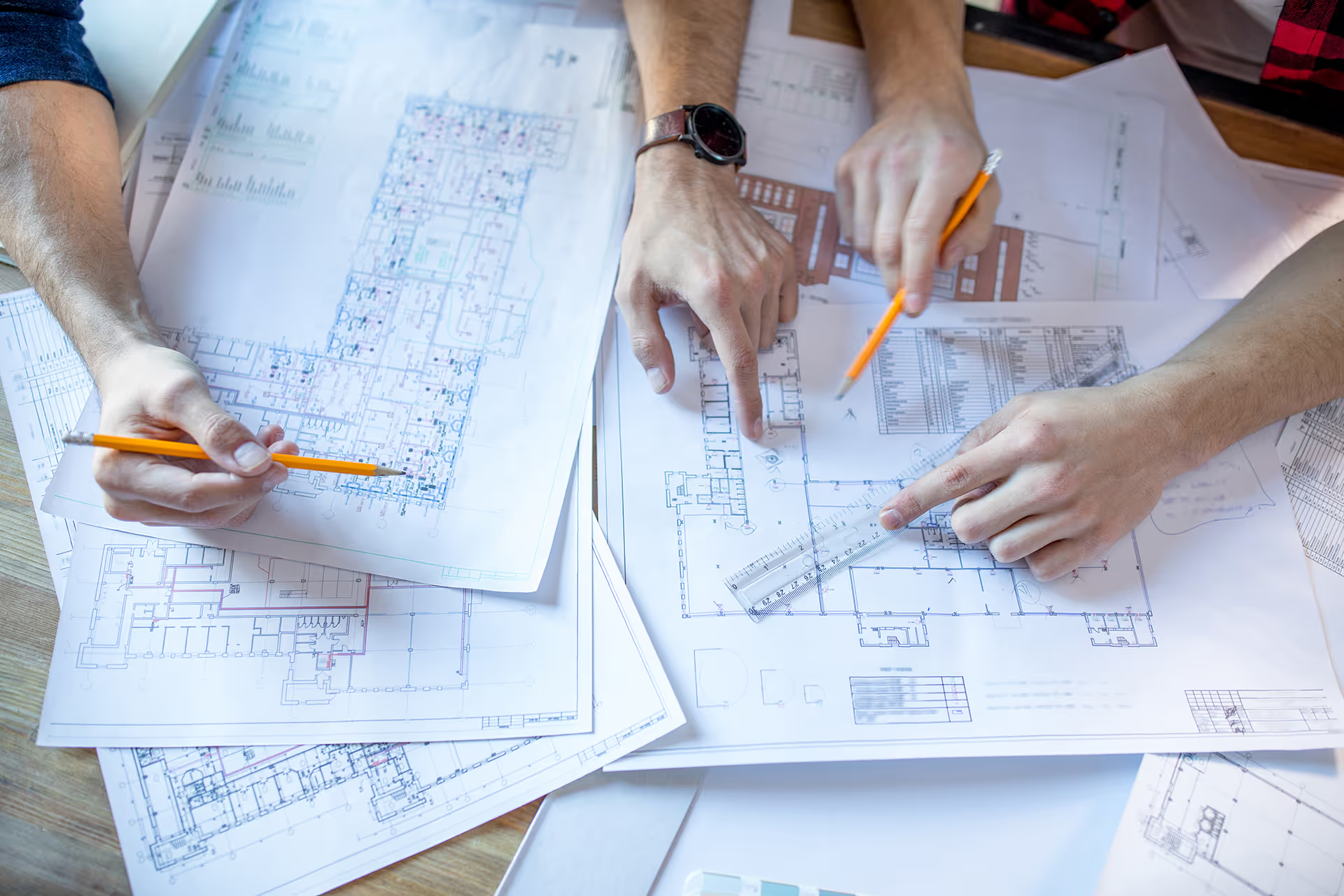Energy Modelling is the Glue That Holds Great Design Together
Energy modelling looks at the building as a whole, not just a collection of parts.

When a building comes together, it’s rarely the result of one discipline working in isolation.
Mechanical, structural, electrical, architectural — every team brings their expertise, but the challenge is how to integrate those moving parts into one cohesive design.
That’s where energy modelling plays a unique role.
As Kewal Parekh, our Director of Building Science, explains:
“Energy modelling is kind of integration of all disciplines.”
𝐀 𝐁𝐫𝐢𝐝𝐠𝐞 𝐁𝐞𝐭𝐰𝐞𝐞𝐧 𝐒𝐲𝐬𝐭𝐞𝐦𝐬
Energy modelling looks at the building as a whole, not just a collection of parts.
It bridges conversations that might otherwise stay siloed:
• Architects exploring window-to-wall ratios and shading
• Mechanical engineers weighing HVAC loads
• Structural teams considering envelope materials
• Electrical designers balancing lighting and controls
By modelling performance outcomes, we can test how decisions in one discipline ripple across the others — long before construction begins.
𝐌𝐚𝐤𝐢𝐧𝐠 𝐁𝐞𝐭𝐭𝐞𝐫 𝐓𝐫𝐚𝐝𝐞-𝐎𝐟𝐟𝐬
One of the greatest benefits of energy modelling is flexibility:
• A more efficient envelope might reduce the need for oversized mechanical systems.
• Smarter lighting and controls can shift electrical loads, freeing up budget elsewhere.
• Investing in airtightness can lower heating demand, which reduces operating costs for decades.
Instead of overdesigning in one area, energy modelling lets us make strategic trade-offs that improve performance without inflating costs.
𝐓𝐡𝐞 𝐋𝐚𝐧𝐠𝐮𝐚𝐠𝐞 𝐨𝐟 𝐂𝐥𝐢𝐞𝐧𝐭𝐬 𝐚𝐧𝐝 𝐑𝐞𝐠𝐮𝐥𝐚𝐭𝐨𝐫𝐬
Energy modelling isn’t just about engineering — it’s also a communication tool.
For clients, it translates technical decisions into clear outcomes:
• “Here’s how this option reduces your long-term operating costs.”
• “This design earns you a better CMHC financing rate.”
For regulators, it provides the proof needed to demonstrate compliance with energy codes or incentive programs.
In both cases, it ensures everyone is speaking the same language.
𝐖𝐡𝐲 𝐈𝐭 𝐌𝐚𝐭𝐭𝐞𝐫𝐬 𝐍𝐨𝐰
In today’s market, efficiency isn’t optional. Clients are under pressure from:
• Rising operating costs
• Tighter building codes
• Financing programs tied to performance
Energy modelling ensures the design isn’t just technically sound — it’s also financially and environmentally sustainable.
It’s what holds the pieces of great design together.
𝐅𝐢𝐧𝐚𝐥 𝐖𝐨𝐫𝐝
Every project involves a dozen disciplines, each with its own priorities.
Energy modelling is the glue that connects them — ensuring that what gets built isn’t just compliant, but cohesive, efficient, and future-ready.














